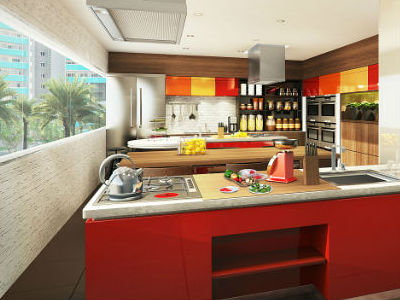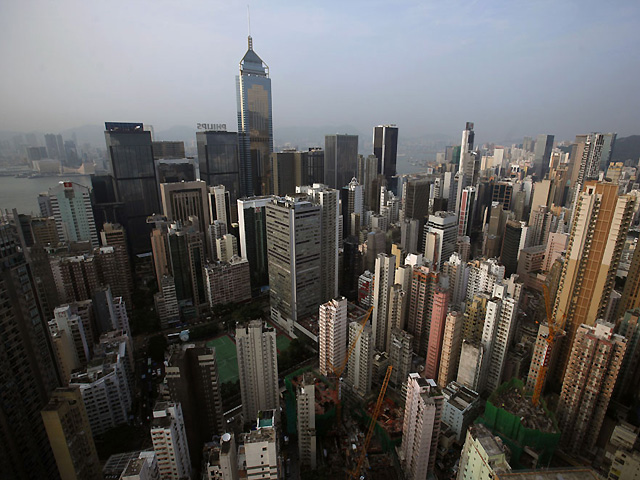Filtered By: Money
Money
PHL plays catch-up as property development goes green
By Siegfrid O. Alegado, GMA NEWS
“Green” appears to be the order of the day in this era of Eco-friendly living, especially for companies in search of office space in key Philippine cities.
Companies are now neck-and-neck in trying to get their hands on the country's budding “green” buildings development, said Julius Guevara, associate director for Advisory and Research for real estate services firm Colliers Philippines.
“Inquiry for green building is on the rise, particularly from multinational firms whose mandate now go for such developments,” he said.
Property consultancy CBRE Philippines president and chief executive officer Rick Santos told GMA News Online in an e-mail message, “Fortune 500 companies, multinational corporations, and even local firms now consider green initiatives as prerequisites in their day-to-day maintenance and operations.”
Office space take-up is at 100 percent in the country's first LEED-certified tower for commercial interior, the Sun Life Centre in Bonifacio Global City in Taguig, CBRE data showed.
LEED is the Gold Leadership in Energy and Environmental Design, a consensus-based, market-driven program for third-party verification of green buildings under the US Green Building Council—an American non-profit organization dedicated to sustainable design and construction.
Zuellig Building, a Gold LEED Core pre-certified 33-story tower in Makati's central business district, has a take-up of 70 percent just months after it was unveiled late last year. 

Playing catch-up
“Developers are thus becoming more keen in meeting these demands and are seen to be more willing to incorporate 'green' features into their buildings, making them cheaper to occupy,” Santos said.
Santos sees developers giving the phenomenon a priority—“with green buildings becoming more the norm than the exception.”
Amid the dizzying high-rises sprouting in Metro Manila and in urban centers throughout the country, CBRE data showed that LEED-certified buildings have risen to 13 to date from eight two years ago including the Asian Development Bank, Ayala Land's Nuvali One Evotech, Shell Shared Services Office, and Texas Instruments in both Baguio and Clark.
CBRE data also showed 85 projects are now pre-registered for LEED certification, from 45 in 2010.
Changing attitudes to going “green” spurred this move toward constructing green buildings, said Pablo Suarez, architect and board member at the Philippine Green Building Council (PHILGBC).
“Climate change, resource conservation and health and well-being of occupants have become part of corporate social and environmental responsibility policies,” he told GMA News Online.
The local version of the US Green Building Council, PHILGBC has its own system of certification called Building for Ecologically Responsive Design Excellence or BERDE—an acronym which in Filipino means green. 

Outweighing costs
Developers see higher profit on strong demand tends to offset the cost of building “greener” structures. Additional costs to going “green is minimal if well-planned from the onset,” CBRE's Santos, who recommended hiring “certified LEED or BERDE consultants as early as in the planning stage.”
Qualifying for an entry-level LEED certification would cost an additional 2 to 3 percent on top of the development price tag if implemented properly, according to studies by CBRE International.
PHILGBC's Suarez said occupants have a new-found awareness of how living in a “green” space can reduce costs.
Chester dela Cruz, PHILGBC communications and business development manager, said greener buildings address a company's economic, environment and human resource management concerns.
Positive effects on a company's bottom line include savings from energy and water bills, and earnings from selling waste materials for recycling. Postponing procurement by recycling and reusing—for example collecting rain for non-potable purposes—plus, the benefits of being able to market the firm as environmentally conscious add to the lure of living in a green building, according to PHILGBC studies.
“Quantifiable benefits include greater productivity of employees, less sick days, higher employee satisfaction rate in work-environment conditions,” Santos noted.
The 'green' standard
“While there is currently no single agreed definition or measure of what constitutes a ‘green’ building, the tools that exist for assessing the environmental credentials of a building are becoming more widely used and accepted,” said Santos.
Certifications from BERDE and LEED safeguard against developers' self-claims and ensure that a building does meet expectations on indoor environment quality, level of comfort for occupants and efficiency in use of energy, water and land.
Both certifications follow the World Green Building Council's proposed quality assurance framework for green building rating schemes.
These have “been developed and are under constant improvement and review,” said Suarez. BERDE “ensures alignment and harmonization with globally accepted minimum green building rating and assessment standards.”
A LEED certification is required by some US firms before relocating or setting up a satellite office here.
Way to go (green)
PHILGBC said developers should look into using Integrated Design Process (IDP)— a more cost-effective way of going green.
“Buildings designed and delivered through this process would also provide long-term benefits via the consideration of issues like future-proofing, resilience, and life-cycle thinking right from the start,” said Dela Cruz.
Involving a series of consultations between owner-architect on one end of the spectrum to builder-occupant, IDP is collaborative method for designing buildings emphasizing on development of a holistic design.
Studies show that such design process results in significant savings in lighting, heating, ventilating, and air conditioning systems.
Applying IDP, much of the new constructions in the region embrace modern design features as glass facades and centralized air-conditioning, which better suit the tropical setting and reduces energy consumption, according to PHILBGC.
Philippine developers are slowly shifting into such practices in order to keep attuned to market needs.
“Even if such features are not seen as 'standard' for now, the same [CBRE] study believes that they will be a few years from now. Green buildings are therefore increasingly seen as 'future-proofed' investments,” said CBRE's Santos. — VS, GMA News
Tags: business, realestate
More Videos
Most Popular



